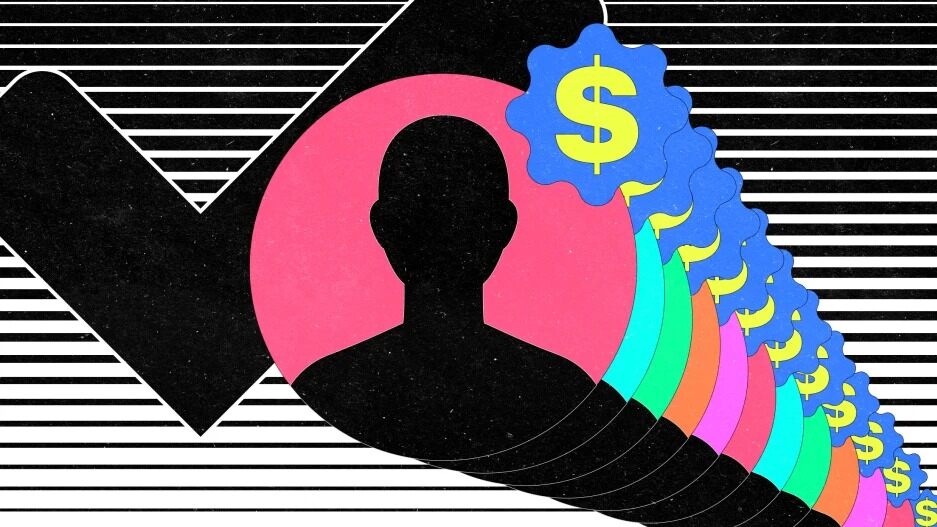- | 9:30 am
Why social media companies picked a very tricky time to start charging users
Facebook and Instagram are the latest to start charging users for features that used to be free, as consumers’ budgets are being squeezed from all directions.

What is social media worth? Not to investors—we know the market valuations of the most familiar social media companies can reach hundreds of billions, even despite recent weakness among tech stocks—but to you? How much would you, a social media user, pay to use Facebook, Instagram, Twitter, and all the rest?
If your answer is zero, that’s no surprise. We’ve been trained to think that way by ad-supported social media since the era of Friendster and MySpace.
But now, Meta, parent of Facebook and Instagram, is the latest to try to change that dynamic. With its gargantuan ad business slipping lately, Meta has announced it will test a subscription service, charging $11.99 a month (or nearly $24 for both platforms) for access to certain advanced features and customer support, a verified-identity digital badge, and “extra impersonation protection against accounts claiming to be you,” as Meta CEO Mark Zuckerberg put it. This, of course, follows Elon Musk rolling out a paid version of its familiar verification checkmarks as part of the $8-a-month Twitter Blue service.
This grasping for new revenue streams is understandable: Digital advertising has softened in general, and Apple’s introduction of a do-not-track option on iOS devices has kneecapped ad-dependent digital businesses. That’s helping inspire a spate of add-on fee experiments from multiple businesses: “Snap gives subscribers early access to new features, YouTube serves them fewer ads, and Discord provides more customization options for people’s chat channels,” Vox recently noted,
But so far, the $0 use-fee proposition seems quite deeply embedded in social brands. Back in November, Musk enthusiasts trusted that his scheme to monetize the checkmark was a no-brainer, on the theory that the ability to buy an alleged status symbol (plus some added features) would attract swarms of buyers. It hasn’t worked out that way. Earlier this month, The Information reported that a paltry 180,000 or so U.S. Twitter users were paying for subscriptions, “less than 0.2% of monthly active users.” That’s hardly going to make up for Twitter’s losing half of its biggest advertisers.
The debate over what digital content consumers will or won’t pay for—and various multitiered “freemium” models that split the difference—is as old as the Web. And certainly, there are subscriber-driven success stories, from the New York Times to Netflix. But models that charge you nothing and instead charge advertisers for access to your attention have succeeded well beyond social media, from search giant Google to countless media sites and entertainment platforms and sponsor-funded apps. If anything, advertising is arguably more dominant than ever. Even Amazon and Walmart generate significant ad revenue—and Netflix, after years of resistance, has lately capitulated to an ad-driven tier.
But that very saturation is surely part of what’s driving the hunt for subscription revenue. Tim Hwang, author of the book Subprime Attention Crisis (which argues that the Internet’s ad-driven ecosystem is far more rickety and vulnerable than it might seem, partly because digital advertising isn’t nearly as effective as claimed), was recently interviewed by New York Times columnist Ezra Klein on his eponymous podcast about the pros and cons of a less ad-dependent online media system. Hwang acknowledges the critique that subscription models can be a walled garden: “A world in which high-quality media sources are moving behind a paywall is one in which low-quality media sources remain out and widely available.” But he still argued for “normalizing subscription” as a means of forcing a “hard conversation” about how information is subsidized, monetized, and spread.
For now, the upshot is that social media companies looking to reduce their ad dependency are doing so at a tricky time. “A greater number of pay-to-play options risk separating the internet into haves and have-nots,” Axios argued recently, noting not just social media examples, but also subscription options that privilege higher-paying users of dating apps, ride-sharing, and delivery services. Add to that the general pressure of inflation on household budgets, and plenty of consumers are getting squeezed from all directions.
Viewed this way, what Meta and Twitter are up to sounds close to shaking down their user base: charging for better access to customer service (as Meta is doing), or making what used to be core security features like text-message two-factor authentication available only to those who will pay for it (as Twitter is doing), for instance.
In Meta’s case, the new, paid tier seems aimed at influencer/creator users, and those who aspire to join that class—to “help up-and-coming creators grow their presence and build community faster,” a Meta spokesperson told The Wall Street Journal. Specifically, those who use Facebook or Instagram as venues to promote their own, often monetized, content. The announcement promised “increased visibility and reach with prominence in some areas of the platform—like search, comments, and recommendations,” as well as “exclusive features to express yourself in unique ways.” By one analyst estimate, this could end up developing into a $1.7 billion revenue stream—certainly not replacing ad revenue, but not nothing.
In other words, Meta may well build a revenue stream that comes from users rather than advertisers. But that may just mean it’s peddling better tools to one group of its users to, in effect, promote themselves to the rest of us. In a way, they’re still selling our attention . . . to each other.





































